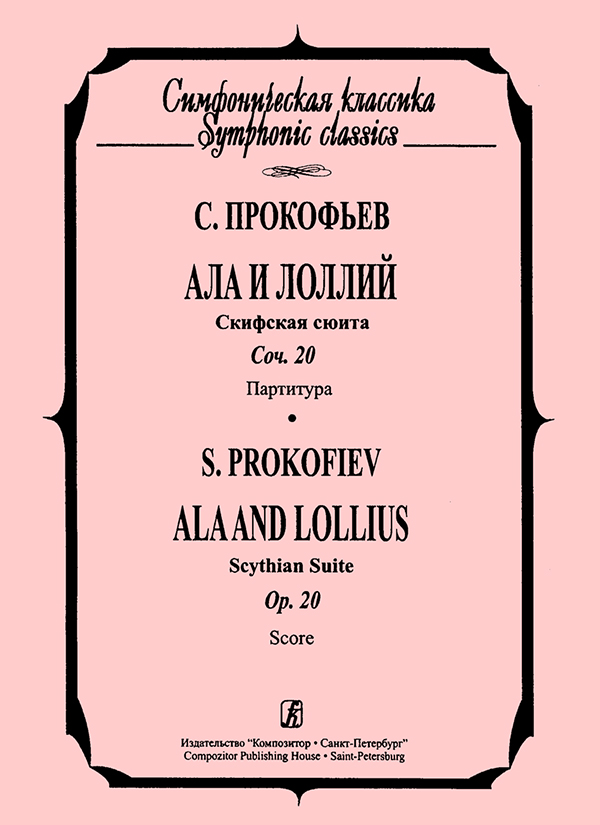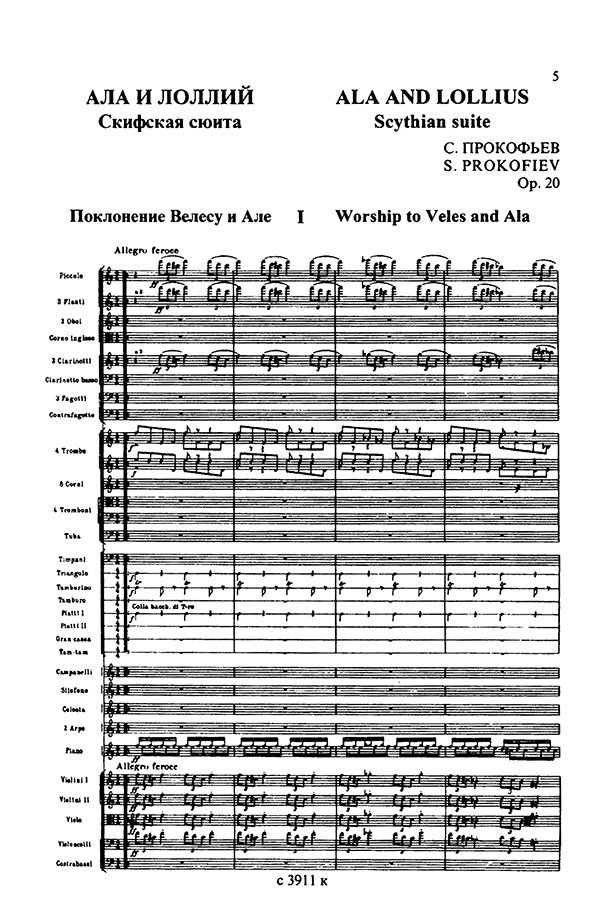
Prokofiev S. Ala and Lollius. Scythian Suite. Pocket Score
- Author:
- Prokofiev S.
- Author (full):
- Sergei Prokofiev
- Title (full):
- Ala and Lollius. Scythian Suite. Op. 20. Pocket Score
- Number of pages:
- 116
The ballet “Ala and Lollius” turned to the Scythian Suite for full orchestra in 4 movements ор. 20. Sergei Prokofiev composed the music itself in 1914–1915.
It was embodied as the ballet after the composer's London tour together with S. Dyagilev company. Just that very time the musical critic V. Karatygin introduced Prokofiev to the poet acmeist Sergei Gorodetsky, who offered the new project to the composer. It и аз the libretto based on the Ancient Slavonian mythological images, partially used in Gorodetsky's book “Yar’”. The libretto abounded with the personages, which names were stylized according to the Slavonian paganism, е. g. the wooden female idol Ala; the Chuzhbog, going to abduct Ala; the Scythian knight hero Lollius, who perishes fighting against odds; the almighty Veles, God of йе Sun (this name is borrowed from mythology) defeating Chuzhbog with his rays.
The piano score was completed as drafts in the end of йе Winter, 1915. Dyagilev's friends and comrades studied it. Both V. Nuvel and А. Nurok expressed their dubious attitude to this music. Having met with Prokofiev in Italy, Dyagilev delayed his work at the ballet. Meanwhile, the composer and entrepreneur agreed about the new fairy ballet “Tale of а Jester, Overjoking the Seven Jesters”. However, in Summer, 1915, Prokofiev returned to his ballet's sketches, having decided to extract uninteresting material, leaving the really worthy music. Thus the suite “Scythian Suite” consisting of 4 movements, came into being. It wholly corresponded to the 4 scenes of the ballet. The suite seemed to sign Prokofiev's tradition of the opera and ballet theatrical drama music to be formed in this genre.
The “Scythian Suite” was firstly performed in Petersburg at the Seventh Season-Ticket of А. Ziloti in the Mariinsky Theatre Hall on January 16, 1916. The author conducted himself. The suite was а success, undergoing the rather contradictory response. Turbulent protests alternated with tumulous applause. As to the orchestrants, they also made their contribution to obstruction (140 persons participated in that performance).
The second execution took place at the beginning of the new concert season. Ziloti timed it to October 29, 1916. It hit all marks, nearly stopping that show. V. Karatygin and В. Asafiev admired it among many music critics.
The “Scythian Suite” belongs to the young Prokofiev's mostly complicated and striking large-scaled compositions, so as his two piano concertos and late operas “Gainbler” and “Fiery Angel”, the Second and Third Symphonies. Nowadays the “Scythian Suite” is considered to be among the most enthralling compositions of the orchestral classics during the 20th century.
- Author
- Prokofiev S.
- Author (full)
- Sergei Prokofiev
- Title (full)
- Ala and Lollius. Scythian Suite. Op. 20. Pocket Score
- Number of pages
- 116

